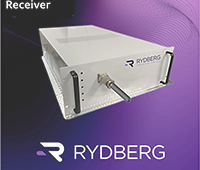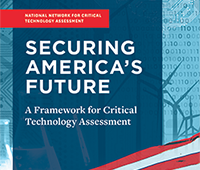Resensys wireless bridge sensor |
On
August 1, 2007, without warning, the roadway suddenly disappeared
beneath drivers on Minneapolis’ I-35W Bridge. The collapse sent more
than 100 cars into the Mississippi River, killing 13 and injuring 145.
In
the five years since, advances in wireless sensor technology are making
warning systems to prevent such tragedies affordable and practical, say
engineers at the University of Maryland. A new generation of these
devices is needed to adequately monitor the nearly 150,000 U.S. highway
bridges—about one in four—listed by the federal government as either
“structurally deficient” or “obsolete,” the researchers add.
“We
no longer need to roll the dice when it comes to the structural
integrity of the nation’s highway bridges,” says University of Maryland
research engineer Mehdi Kalantari. “Technical advances in wireless
sensors make real-time monitoring both affordable and practical.”
Kalantari
leads one of two engineering teams at Maryland addressing the need.
Working at the university’s Mtech incubator, Kalantari has taken an
entrepreneurial route, developing a system of tiny, long-lasting,
energy-efficient, low-maintenance wireless sensors and software that
analyzes real-time data collected. His startup, Resensys, has
manufactured systems for use in the private sector and for testing by
Maryland State Highway officials.
Another
University of Maryland engineering team—supported by federal and state
funding and working with researchers from North Carolina State
University and URS Corp.—is working on a total “smart bridge” package
with multiple technology innovations. Their Integrated Structural Health
Monitoring system is not yet available commercially. But, key elements
of this system are being tested by Maryland State Highway officials, the
Maryland Transportation Authority and the North Carolina Department of
Transportation.
“Wireless
technology definitely makes bridge structural health monitoring more
efficient and more effective,” says UMD civil and environmental
engineering research professor Chung Fu, director of Maryland’s Bridge
Engineering Software & Technology Center and one of the leaders of
this second research group.
“If
the prices for system hardware and software are further reduced and
standardized, we may see more widespread application in the next five to
10 years,” Fu says, adding that he has seen great advancement in this
technology in the past decade.
Meanwhile,
Kalantari is in the second year of testing his system on a Maryland
Interstate bridge along the Capital Beltway in suburban Washington, D.C.
Over the past 12 months, he has upgraded his system, making it fully
operational, and expanded its use to the private sector. A few U.S. and
international firms are using it on transportation projects, as well as
for monitoring the safety of building facades and the safety of large
construction cranes. Also, he’s adapted the sensors for the purpose of
monitoring cracks on bridge piers 120 feet underwater.
A
few dozen tiny sensors, strategically placed on small to medium-sized
bridges could measure prime factors such as strain, vibration,
deformation, pressure, tilt, inclination, displacement, crack activity,
humidity and temperature, Kalantari says—and for a much smaller price
than current technology.
His
team has equipped the system with a wide range of remote sensing
functions and data analysis software capable of detecting structural
anomalies. Also, the system delivers warnings to bridge maintenance
engineers—by email or text messaging, in the case of severe warnings.
New
“smart” bridges—including the replacement span in Minneapolis use
wired networks of sensors to detect problems early, when repairs are
often cheaper, providing a wide margin of safety. But these wired
systems are generally too expensive to retrofit all the old bridges that
need them, Kalantari says. Overall, he estimates that existing wired
technologies cost at least 10 to 50 times more than his wireless system.
The
latest U.S. figures from the Bureau of Transportation Statistics (2010)
list nearly 70,000 U.S. bridges as “structurally deficient,” requiring
extra surveillance. In addition, more than 77,000 others are categorized
as “obsolete”—exceeding their intended lifespan and carrying loads
greater than they were designed to handle. Under federal requirements,
structurally deficient bridges must be visually inspected once each
year. Others must be inspected once every two to five years.
|
“Limited,
in-person inspections are not sufficient to provide highway maintenance
authorities with an adequate margin of safety when compared with
real-time monitoring,” Kalantari concludes. Ultimately, adds Fu,
real-time remote sensing will serve as a valuable supplement, but not
fully replace human inspections. “You can’t put sensors everywhere,” he
says.
Highway
officials have been paying attention to the advances in remote sensing
applications. A UMD project using the Kalantari team’s system to monitor
a highway bridge and sponsored by the Maryland State Highway
Administration (SHA) was selected as one of the “sweet 16” most
interesting developments. The results were presented this summer at the
annual meeting of the American Association of State Highway and
Transportation Officials (AASHTO) research advisory committee.
Kalantari
hopes the system will receive the necessary approval and certifications
over the next few years from AASHTO members and the U.S. Department of
Transportation.
In its report
on the fatal Minneapolis bridge collapse, the National Transportation
Safety Board identified a faulty metal plate as a likely cause of the
disaster. It notes an “inadequate use of technologies for accurately
assessing the condition of gusset plates on deck truss bridges.”
Both UMD engineering teams say the new wireless monitoring technology is poised to fill that need.
The
UMD Integrated Structural Health Monitoring system research is
sponsored by the U.S. Department of Transportation’s Research and
Innovative Technology Administration (RITA), under the Commercial Remote
Sensing and Spatial Information (CRS&SI) Technologies Program, and
by the Maryland Transportation Authority, Maryland State Highway
Administration and the North Carolina Department of Transportation.
Source: University of Maryland






